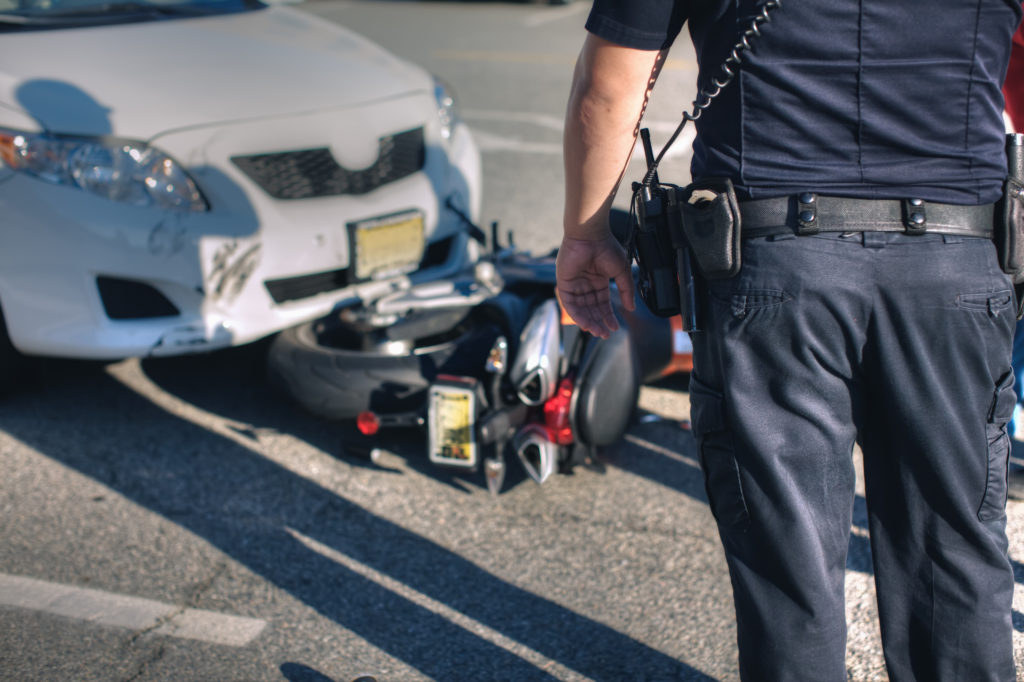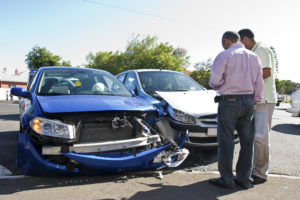Written By:
 Salvatore Nuzzo
Salvatore Nuzzo
Su Dedicado Equipo Legal de Confianza
3 Generaciones & +100 Años de Experiencia Legal Combinada

Once the winter weather gives way to a milder spring, especially in the Northeast and Midwest, more people take to the roadways on their motorcycles. Oftentimes, these places are heavily populated, like the New York metropolitan area where approximately 25 million people live, work and play.
People driving cars, who may have not seen many motorcycles on the road in months, now need to reboot their navigation skills, integrating bikers into their urban traffic patterns. In short, auto operators have to engage in a higher level of awareness when motorcycles are on the road. Motorcycles appear quickly, sometimes seemingly from out of nowhere but, in fact, they are really coming from the same directions and speeds as other vehicles. They’re just not as large or easily spotted. By the time a motorcyclist comes into view, a tragic collision may already be inevitable, leading to potentially catastrophic and life changing consequences.
Factors to Be Considered
This may sound like the automobile driver has a duty to the motorcyclist and the motorcyclist has no duty to other vehicles on the road. This is not the case. Both operators are required to exhibit reasonable care and show the “reasonable person” standard while operating their vehicles, but I will expand on why this is by no means an equal responsibility.
First, automobiles, vans, and trucks are larger and heavier, and their drivers are encased in a protective framework of metal. Most states also require occupants to wear a seatbelt. Motorcyclists, on the other hand, are riding much lighter vehicles, not encased, and not belted in, thereby exposing them to all types of hazards that might do serious bodily harm.
Motorcycles are required to adhere to, and follow the same rules of the road as other drivers and, because of their vulnerability, they need an elevated awareness especially in the spring when others need to “get used to motorcycles” all over again. It’s like the first freeze or snowfall. You can’t understand why there are suddenly so many initial fender benders. Have people forgotten how to drive in the snow? Actually yes, and the same phenomenon arises with motorcycles.
Am I encouraging auto operators to be more careful when motorcycles start their seasonal pilgrimage on to streets and highways? Well…yes I am.
There are also reasons for additional care and heightened awareness on the part of the motorcyclist. In most cases, these motorcyclists are only operating their bikes regularly five to six month’s a year. Poor weather conditions during those months can further reduce the time spent riding. Also during this period, motorcyclists will still need to drive vehicles other than their bikes, further reducing operating time. The point is that, at best, the average motorcyclist is on that bike closer to four month’s time each year.
The average motorcyclist’s age is also a factor. A lot of fifty somethings, who couldn’t afford a Harley Davidson when younger are suddenly emancipated from other financial commitments. With disposable cash – and maybe looking to satiate their youthful fancies – motorcycles are one of their most common purchases.
The operator’s level of training and experience can play a role in accidents involving a motorcycle. For example, knowing how to ride one in your teens and twenties doesn’t necessarily qualify you to operate a $30,000 dollar bike equipped with technology that did not exist in the 1970’s, 80’s or 90’s. There are a large number of motorcyclists on the road who have too little training and experience to handle the large, sophisticated motorcycles that are on the market today. Too much bike for some of these operators can create unnecessary accidents.
The bottom line is that determining the underlying causes of motorcycle accidents can become complicated by various factors.
My Take on These Accidents
I have handled catastrophic injury claims for many years, and have attended many seminars and workshops. I have seen firsthand the seriousness of injury even in minor motorcycle accidents. A leg between a motorcycle engine block and a 4000-pound car front end can cause an injury severe enough that the leg will never be fully functional again.
I cannot emphasize enough that both the motorcyclist and automobile driver need to be fully aware of what’s occurring in every direction while driving – what’s going on in front, to the left and right, behind, and, most importantly, where there are “blindspots.” I stated earlier that both parties have equal responsibility, which legally is true, but in most cases, no matter which party is at fault a police officer, witness, jury or judge may have a very natural bias. Some of these folks may be motorcycle enthusiasts and may automatically think the person driving the auto is to blame. On the other hand, some people have an opposite bias. They may perceive motorcyclists as risk takers.
Experience tells me that because of the severity of injury, lack of protection, exposure to numerous objects (not just other vehicles), and the potential for life-changing consequences for the motorcyclist and family, sympathies tend to favor the motorcyclist. The exception would be if the motorcyclist’s behavior was egregious. Barring this, the implicit question will always be: Could the auto operator have been more careful?
 Salvatore Nuzzo
Salvatore Nuzzo
About The Author
Salvator Nuzzo has spent more than 30 years as an insurance adjuster for various major insurers. Throughout his career, he has handled an estimated 8,000 claims.
Read MoreLatest from Our Blog

Normas editoriales
Rosenblum Law se compromete a ofrecer contenidos informativos de la máxima calidad. Todo el contenido está sujeto a nuestros rigurosos estándares editoriales de relevancia, precisión, fuentes y objetividad. Antes de ser publicado, todo es verificado por un editor y revisado por uno de nuestros abogados para comprobar su solidez jurídica.
How to Cite Rosenblum Law’s Article
APA
Salvatore Nuzzo (Oct 28, 2021). Tips for Talking to an Insurance Adjuster After an Accident. Rosenblum Law Firm, https://es.rosenblumlaw.com/tips-for-talking-to-an-insurance-adjuster-after-an-accident/
MLA
Salvatore Nuzzo "Tips for Talking to an Insurance Adjuster After an Accident". Rosenblum Law Firm, Oct 28, 2021. https://es.rosenblumlaw.com/tips-for-talking-to-an-insurance-adjuster-after-an-accident/
